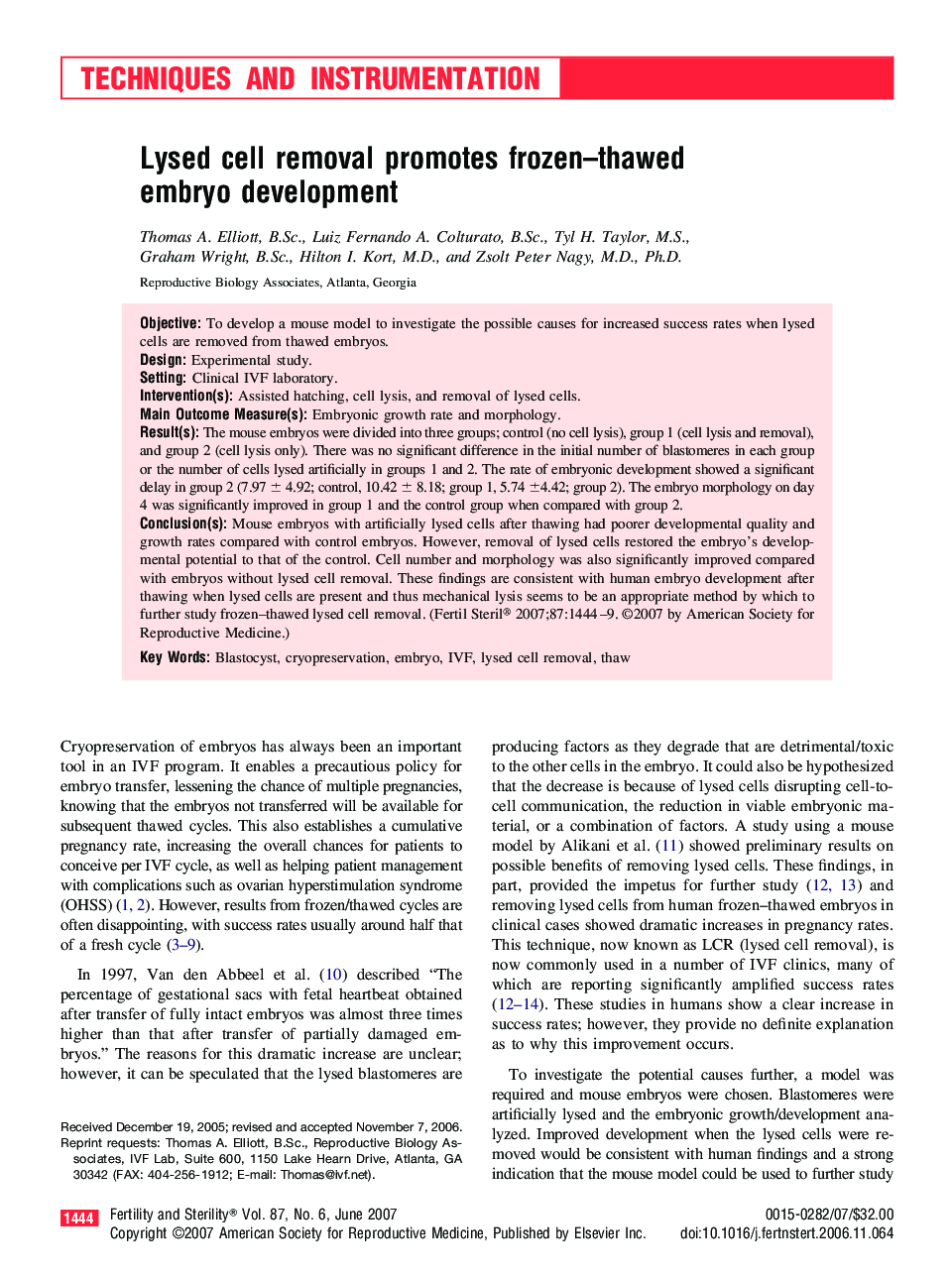| Article ID | Journal | Published Year | Pages | File Type |
|---|---|---|---|---|
| 3942022 | Fertility and Sterility | 2007 | 6 Pages |
ObjectiveTo develop a mouse model to investigate the possible causes for increased success rates when lysed cells are removed from thawed embryos.DesignExperimental study.SettingClinical IVF laboratory.Intervention(s)Assisted hatching, cell lysis, and removal of lysed cells.Main Outcome Measure(s)Embryonic growth rate and morphology.Result(s)The mouse embryos were divided into three groups; control (no cell lysis), group 1 (cell lysis and removal), and group 2 (cell lysis only). There was no significant difference in the initial number of blastomeres in each group or the number of cells lysed artificially in groups 1 and 2. The rate of embryonic development showed a significant delay in group 2 (7.97 ± 4.92; control, 10.42 ± 8.18; group 1, 5.74 ±4.42; group 2). The embryo morphology on day 4 was significantly improved in group 1 and the control group when compared with group 2.Conclusion(s)Mouse embryos with artificially lysed cells after thawing had poorer developmental quality and growth rates compared with control embryos. However, removal of lysed cells restored the embryo’s developmental potential to that of the control. Cell number and morphology was also significantly improved compared with embryos without lysed cell removal. These findings are consistent with human embryo development after thawing when lysed cells are present and thus mechanical lysis seems to be an appropriate method by which to further study frozen–thawed lysed cell removal.
